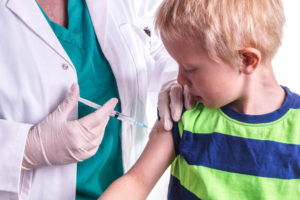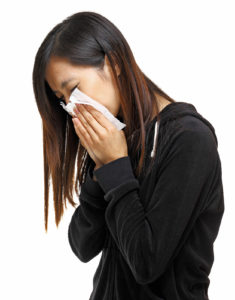Allergy Shots – A Brief Overview
 Allergy shots are synonymous with other terms such as allergy immunotherapy, allergy injections, allergy desensitization, and allergy hyposensitization. The allergy shots Gainesville, VA residents rely upon are the same allergy shots that have been given in the U.S. for over 100 years. They have been an important method of preventing and/or diminishing allergy symptoms in tens of millions of individuals over the last century.
Allergy shots are synonymous with other terms such as allergy immunotherapy, allergy injections, allergy desensitization, and allergy hyposensitization. The allergy shots Gainesville, VA residents rely upon are the same allergy shots that have been given in the U.S. for over 100 years. They have been an important method of preventing and/or diminishing allergy symptoms in tens of millions of individuals over the last century.
Allergy shots can be given to almost any person and are given to any individual over the age of 2. Usually, however, most children do not begin allergy injections earlier than 4 years of age. They can be given to children, teenagers, adults, and the elderly. They can be continued in a pregnant individual as well as in a person who is nursing, as long as it is confirmed by the patient’s obstetrician and/or pediatrician of the nursing baby.
Allergy injections are given to patients with allergic rhinitis (i.e., hay fever), allergic conjunctivitis, asthma, and venom hypersensitivity (i.e., allergy to stings of bees, wasps, hornets, yellow jackets, and/or bites from fire ants). The idea behind them is to get to the root of the problem, as opposed to treating the symptoms of allergic rhinitis, allergic conjunctivitis, and asthma. By receiving allergy injections, one’s body develops antibodies that help prevent the allergen (e.g., dust mites, molds, pollens, pets, cockroaches, venom) from causing the unwanted allergy and/or asthma symptoms.
Allergy immunotherapy is useful and may be considered when one is allergic to substances that cannot be avoided. They are also used in individuals that have failed over the counter therapy and/or prescription medications. There are other individuals that do not want to take medications on a daily basis. Others have very severe symptoms and develop secondary problems (e.g., sinus infections, ear infections, bronchitis, asthma) from untreated or sub-par treatment from medications. Many people cannot deal with the side effects of many of the allergy medications. Still others would like to treat the cause of the allergy rather than just treat the symptoms of allergy and/or asthma.
During allergy immunotherapy, very small doses of the allergens that the individual is allergic to are administered subcutaneously (i.e., just under the skin into the fat) of the arm(s) either once a week or twice a week, depending on the patient’s choice. Obviously, if the individual receives the injections more frequently (i.e., twice a week vs. once a week), he or she will get through the build-up process twice as fast. Each dose is increased in strength over the build-up period which at Black & Kletz Allergy is usually 18 doses. Therefore, the maintenance dose (i.e., top dose) is reached in 9 or 18 weeks depending if the individual gets his or her build-up shots twice a week or once a week respectively. Once the maintenance dose is reached, the individual can spread out the frequency of the injections to up to every 4 weeks. Note that many people get their shots more frequently throughout the year depending on their “bad” seasons, such as Spring and Fall which in the Washington, DC, Northern Virginia, and Maryland metropolitan area is very common. Others need their injections more frequently throughout the year since they have perennial symptoms which may require them to get the injections more frequently, depending on their severity of allergy and/or asthma symptoms. The average length of time someone is on the allergy shots Gainesville, VA residents receive from Black & Kletz Allergy ranges between 3-5 years. It is important to note that allergy shots to venoms have a different build-up and maintenance schedule.
The effectiveness of allergy injections is excellent. They have been shown work in 80-85% of individuals taking them. Venom immunotherapy is effective in over 90% of patients receiving them. Allergy injections may also prevent the development of asthma in children with allergic rhinitis. They help to prevent the inflammation that occurs in a typical allergic encounter. Normally when an individual is exposed to a known allergen, many chemicals such as histamine and leukotrienes are released into the bloodstream of the patient. These chemicals are responsible for producing the miserable symptoms of allergies, and in addition, cause inflammation to occur. The allergy shots Gainesville, VA patients receive help the body naturally produce antibodies that will help prevent this process from occurring and thus the individual suffers much less or not at all and has much less or no development of allergic inflammation.
There are essentially no side effects of allergy shots, however there are two risks. The first being the chance of having a local reaction at the site of the injection which may include localized itchiness, redness and/or swelling. The second risk is that of a systemic reaction such as developing generalized itching, hives, swelling, wheezing, abdominal cramps, drop in blood pressure, which potentially can be serious. For that reason, although very rare to occur, it is important to wait 30 minutes in our office after an allergy injection, so that we could treat you with epinephrine and/or Benadryl if necessary. Despite the rarity of a systemic reaction, it can occur and it is necessary to wait the 30 minutes after an injection. A longer wait time is needed for individuals receiving venom immunotherapy.
In summary, allergy shots are a very effective treatment modality for individuals with allergic rhinitis, allergic conjunctivitis, asthma, and/or venom hypersensitivity. As mentioned above, they have been given in the U.S. for over a century and can be given to all ages from young children to the elderly. The board certified allergists at Black & Kletz Allergy have been administering allergy shots for over 50 years. We have one office location in Washington, DC and 2 offices in Northern Virginia with one office in McLean, VA (Tysons Corner, VA) and another in Manassas, VA. We have on-site parking at all 3 office locations and the Washington, DC and McLean, VA offices are Metro accessible. There is a free shuttle that runs between the McLean office and the Spring Hill metro station on the silver line. If you suffer from allergies, asthma, sinus problems, hives, swelling episodes, and/or immunological conditions, please call our office to schedule an appointment or you can click Request an Appointment and we will respond within 24 hours by the next business day. Black & Kletz Allergy prides ourselves in providing high quality allergy and asthma care in a professional, inviting, and friendly environment.

 As
As  As the temperatures are dropping and the leaves are starting to “fall”, the ragweed and other weed pollen counts are also gradually decreasing, but the mold spores will be a significant trigger of asthma and allergy symptoms in the coming few months for sensitized individuals.
As the temperatures are dropping and the leaves are starting to “fall”, the ragweed and other weed pollen counts are also gradually decreasing, but the mold spores will be a significant trigger of asthma and allergy symptoms in the coming few months for sensitized individuals.